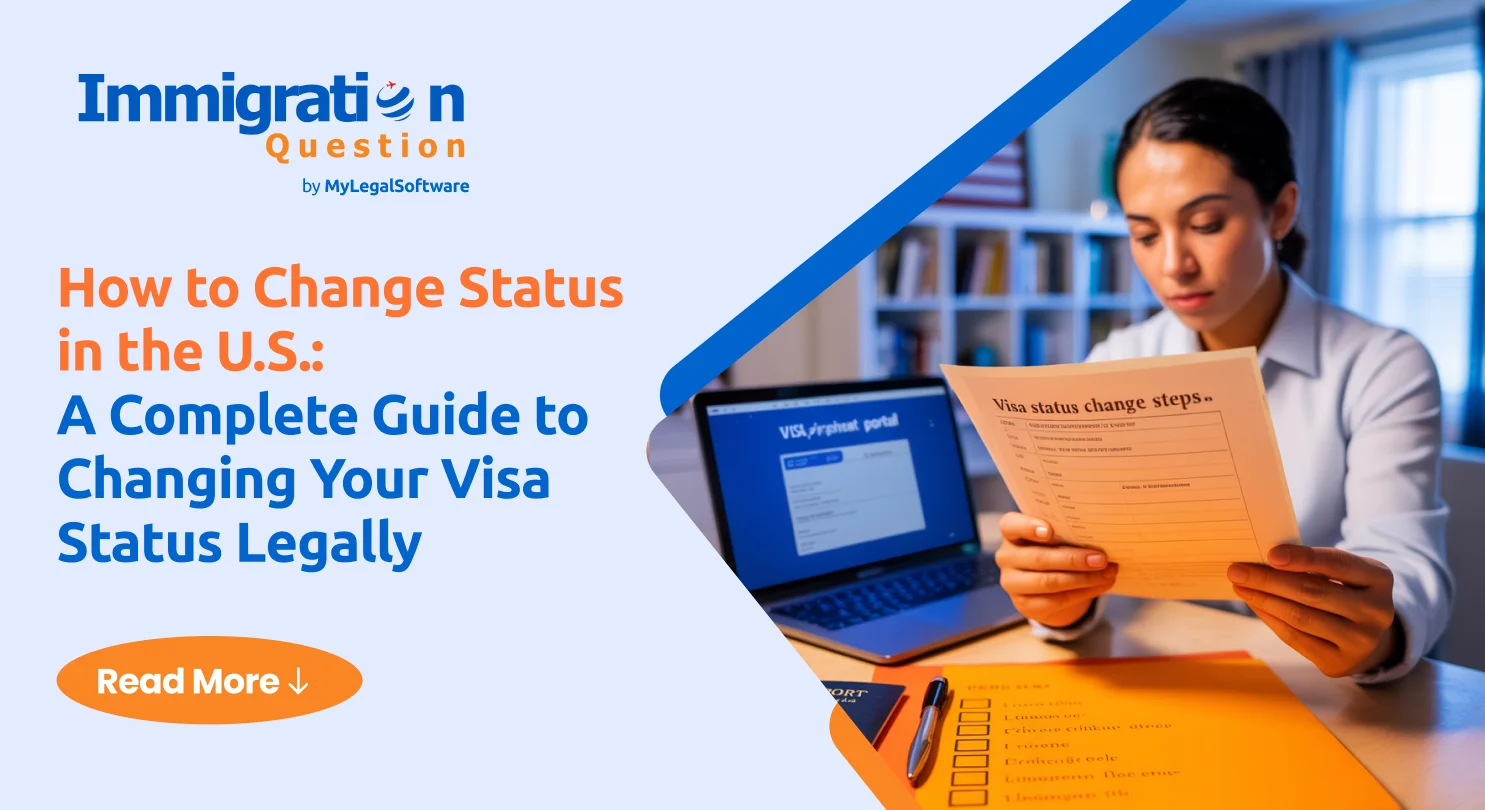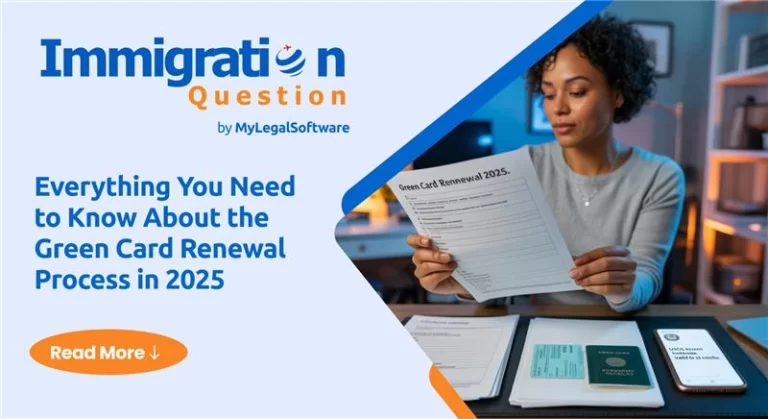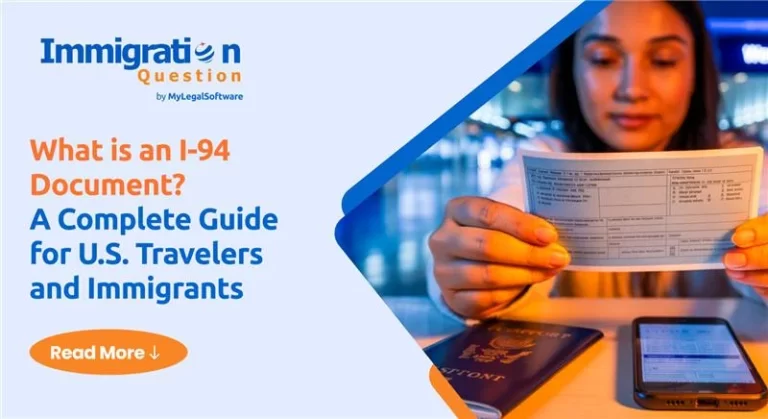Changing your visa status while you’re already in the U. S can be a big deal—especially if you travel to study or work. But navigating this process correctly and legally is critical. Messing it up could mean losing your legal status or even getting barred from returning.
In this guide, we’ll break everything down for you—what it really means to change your status, how to do it, who qualifies, and what to watch out for. Whether you’re a student or visitor, this is the roadmap you need.
What Does It Mean to Change Status in the U.S.?
A change of status in the U.S. means you’re switching from one nonimmigrant visa type to another—without leaving the country. So, if you came in on a tourist visa (B-2) and later decided to enroll in school, you’d need to change your status to an F-1 student visa.
It’s important not to confuse this with adjustment of status, which is the process for getting a green card while staying in the U.S. A change of status is only for nonimmigrant visas.
Some people change status inside the U.S.; others use consular processing, which involves applying at a U.S. embassy abroad. Staying in the U.S. during a change of status can be more convenient, especially if you’re already there legally.
Why Do People Change Their Visa Status?
Here are some common reasons people go through this process:
- A student graduates and gets a job offer (F-1 to H-1B)
- A tourist decides to enroll in college (B-2 to F-1)
- Career or family circumstances change after arriving
Changing status allows you to remain in the U.S. without needing to exit and reapply from your home country.
Need help with immigration matters? Immigration Question makes it easy to get clear answers from real immigration attorneys—no time wasting, no confusion, just honest guidance when it matters most.
Who Is Eligible to Change Visa Status in the U.S.?
To qualify for a change of status in the U.S., you must:
- Be lawfully admitted to the U.S. on a valid nonimmigrant visa
- Have maintained lawful status throughout your stay
- Not have committed any actions that would disqualify you
- File your application before your current status expires
However, not everyone can change status in the U.S. You are generally not eligible if:
- You entered the U.S. without inspection
- You overstayed your visa
- Your visa prohibits changes (e.g., C or D visa holders)
- You have violated the terms of your current status
Most nonimmigrant visa categories allow for a change of status, but staying compliant with your current status is critical throughout the process.
Pro Tip: Overstaying your visa usually makes you ineligible for most changes of status cases. However, if you are an immediate relative of a United States citizen (like a parent, spouse, or unmarried child under 21 years), it’s possible that you’ll be able to apply for a green card from within the U.S. even when you have overstayed.
Common Types of Status Changes
Here are a few of the most frequent transitions:
- Student to worker (F-1 to H-1B): This usually happens after graduation and requires employer sponsorship.
- Visitor to student (B-2 to F-1): Must show acceptance from a U.S. school and sufficient financial support.
- J-1 to F-1 or H-1B: Exchange visitors may switch to student or work status if eligible and not subject to the two-year home residency requirement.
Each category has unique timelines and filing requirements, so it’s important to act early and understand what’s required.
The Procedure to Change Visa Status in the U.S.
Here’s how the process usually works:
- Determine eligibility and timing: Make sure you meet all requirements and apply before your current visa expires.
- Gather documentation: This includes passport, I-94, current visa, and evidence for your new status (e.g., school acceptance or job offer).
- File the correct form: Most applicants use Form I-539 for a change of status. Some employment-based cases may require Form I-129.
- Pay the filing fee and attend biometrics: Pay the filing fee and prepare for a biometrics appointment at a USCIS center.
- Wait for USCIS decision: Processing can take weeks or months, depending on the visa type.
- After the decision: If approved, you may begin the activity under your new status. If denied, consult a legal professional immediately.
Required Documents and Forms
The main form for nonimmigrant status changes is Form I-539. You’ll also need:
- Proof of your current visa status (I-94 record)
- Passport and visa copies
- Proof of current lawful status
- Financial documentation (e.g., bank statements or sponsor affidavits)
- School or employer letters of support
In employment cases, employers may need to file Form I-129 on your behalf.
Processing Times and What to Expect
Processing times vary depending on visa category, USCIS workload, and the peculiarity of your case. It can take anywhere from 2 months to over a year. USCIS offers premium processing for some employment-related changes (like H-1B), but not for all cases.
You can check the status of your case on the USCIS website using your receipt number. Sometimes, USCIS will request additional evidence (RFE), which can delay the process.
Can You Stay in the U.S. While Change of Status Is Pending?
Yes, if you applied while your current visa was still valid, you are generally allowed to remain in the U.S. during the review period. However, you are not authorized to work unless specifically granted.
Traveling abroad while your application is pending may be considered abandonment of the request. Unless absolutely necessary, it’s best to remain in the U.S. until a decision is made.
Common Challenges and How to Avoid Them
- Timing: Applying too late is one of the most common reasons for denial
- Overstays: If you overstay your visa even by a few days, you could be barred from future benefits (except in some special cases).
- Insufficient documentation: Missing or unclear evidence can lead to delays or denials.
- Wrong visa type: Applying for an incompatible change can waste time and money.
When in doubt, it’s wise to ask specific questions on Immigration Question or consult with an experienced immigration attorney.
Tips for a Successful Change of Status Application
- Start the process early—ideally 45–60 days before your visa expires
- Keep digital and hard copies of all documents
- Avoid international travel while your application is under review
- Stay informed by checking your case status regularly
- Seek legal advice if your situation is complicated or urgent
Final Thoughts
Changing your visa status in the U.S. is possible—but it has to be done right. By staying on top of deadlines, submitting accurate paperwork, and understanding your visa type, you can stay on the legal path.
Whether you’re a student, worker, or traveler hoping to extend your stay, make sure you understand the full process and timeline.
Need help with your status change? Visit Immigration Question to ask legal questions, get advice, and connect with experienced immigration attorneys.
Frequently Asked Questions
1. How to apply for change of status in the U.S.?
You must file Form I-539 (or I-129 for employment cases), submit supporting documents, and pay the fee before your current status expires.
2. How long does it take for status change in the U.S.?
Processing can take anywhere from 2 months to over a year, depending on your visa type and USCIS workload.
3. Can I change my visa status while in the U.S.?
Yes, if you’re lawfully present and your visa type allows it, you can apply without leaving the country.
4. Can you stay in the U.S. while change of status is pending?
Yes, as long as you apply before your current visa expires, you may remain in the U.S. while USCIS processes your request.
5. How to change visa status in the U.S. if I’m on a tourist visa?
You can apply to change from B-2 to another category (like F-1 student), but you must not start studying or working until approval.
Note: If you entered the U.S. under the Visa Waiver Program, you are not eligible to apply for a change of status from within the US.
6. What happens if my change of status application is denied?
If denied, you may need to leave the U.S. immediately. Consult an attorney to explore your options or file an appeal. In most cases, you cannot appeal a denied change of status application, but you may be able to file a motion to reopen or reconsider if you have new evidence or believe there was a legal error.









